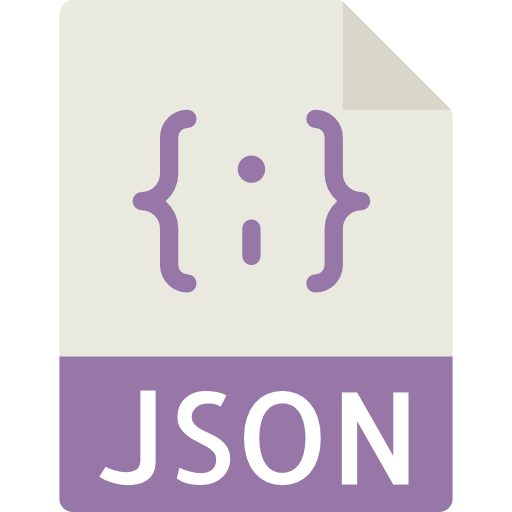Summarize this article with:



Building your pipeline or Using Airbyte
Airbyte is the only open source solution empowering data teams to meet all their growing custom business demands in the new AI era.

- Inconsistent and inaccurate data
- Laborious and expensive
- Brittle and inflexible

- Reliable and accurate
- Extensible and scalable for all your needs
- Deployed and governed your way
Start syncing with Airbyte in 3 easy steps within 10 minutes
Take a virtual tour
Demo video of Airbyte Cloud
Demo video of AI Connector Builder
Setup Complexities simplified!
Simple & Easy to use Interface
Airbyte is built to get out of your way. Our clean, modern interface walks you through setup, so you can go from zero to sync in minutes—without deep technical expertise.
Guided Tour: Assisting you in building connections
Whether you’re setting up your first connection or managing complex syncs, Airbyte’s UI and documentation help you move with confidence. No guesswork. Just clarity.
Airbyte AI Assistant that will act as your sidekick in building your data pipelines in Minutes
Airbyte’s built-in assistant helps you choose sources, set destinations, and configure syncs quickly. It’s like having a data engineer on call—without the overhead.
What sets Airbyte Apart
Modern GenAI Workflows
Move Large Volumes, Fast
An Extensible Open-Source Standard
Full Control & Security
Fully Featured & Integrated
Enterprise Support with SLAs
What our users say

Andre Exner

"For TUI Musement, Airbyte cut development time in half and enabled dynamic customer experiences."

Chase Zieman

“Airbyte helped us accelerate our progress by years, compared to our competitors. We don’t need to worry about connectors and focus on creating value for our users instead of building infrastructure. That’s priceless. The time and energy saved allows us to disrupt and grow faster.”

Rupak Patel

"With Airbyte, we could just push a few buttons, allow API access, and bring all the data into Google BigQuery. By blending all the different marketing data sources, we can gain valuable insights."
Prerequisites:
- Access to an Airtable base with API access enabled
- Airtable API key
- Basic knowledge of Python programming
- Python installed on your machine
- A text editor or an IDE (like Visual Studio Code, PyCharm, etc.)
- Go to https://airtable.com and log in to your account.
- Navigate to the base you want to export data from.
- Click on the “Help” menu in the top-right corner and select “API documentation.”
- In the API documentation, find your base’s API endpoint URL and note down the table names you want to export.
- Click on your account icon in the top-right corner of the Airtable interface.
- Go to “Account” settings.
- Under the “API” section, you’ll find your API key. Keep this key secure as it provides full access to all your bases.
- Open your terminal or command prompt.
- Create a new directory for your project and navigate into it.
mkdir airtable_to_json
cd airtable_to_json - Create a virtual environment (optional but recommended).
python -m venv venv - Activate the virtual environment.
- On Windows:
venv\Scripts\activate - On macOS and Linux:
source venv/bin/activate
- On Windows:
- Install the requests library to make HTTP requests.
pip install requests
- Open your text editor or IDE and create a new Python file named airtable_to_json.py.
- Import the necessary modules.
import requests
import json - Define your API key and endpoint URL.
API_KEY = 'your_api_key'
BASE_ID = 'your_base_id'
TABLE_NAME = 'your_table_name'
ENDPOINT = f'https://api.airtable.com/v0/{BASE_ID}/{TABLE_NAME}'
HEADERS = {'Authorization': f'Bearer {API_KEY}'} - Write a function to fetch records from Airtable.
def fetch_airtable_records(endpoint, headers):
response = requests.get(endpoint, headers=headers)
response.raise_for_status() # Raise an HTTPError if the HTTP request returned an unsuccessful status code
return response.json() - Write a function to save the data to a JSON file.
def save_to_json(data, filename):
with open(filename, 'w', encoding='utf-8') as f:
json.dump(data, f, ensure_ascii=False, indent=4) - Use the functions to fetch data and save it to a JSON file.
def main():
data = fetch_airtable_records(ENDPOINT, HEADERS)
save_to_json(data, 'airtable_data.json')
print("Data has been successfully exported to airtable_data.json")
if __name__ == "__main__":
main() - Save the Python script.
- Go back to your terminal or command prompt.
- Run the script.
python airtable_to_json.py - Check the current directory for the airtable_data.json file containing the exported data.
Airtable’s API may paginate the results if there are a lot of records. You can modify the fetch_airtable_records function to handle pagination by following the offset parameter in the API response.
Notes:
- Always keep your API keys private and secure.
- Be aware of Airtable’s rate limits to avoid being temporarily blocked from making requests.
- The data fetched from Airtable will include metadata. You may need to parse it to extract the records array from the JSON response.
- If you have a large number of records, consider implementing error handling and retries for robustness.
FAQs
What is ETL?

ETL, an acronym for Extract, Transform, Load, is a vital data integration process. It involves extracting data from diverse sources, transforming it into a usable format, and loading it into a database, data warehouse or data lake. This process enables meaningful data analysis, enhancing business intelligence.

Airtable is a cloud collaboration service.

Airtable's API provides access to a wide range of data types, including:
1. Tables: The primary data structure in Airtable, tables contain records and fields.
2. Records: Each row in a table is a record, which contains data for each field.
3. Fields: Each column in a table is a field, which can contain various data types such as text, numbers, dates, attachments, and more.
4. Views: Airtable allows users to create different views of their data, such as grid view, calendar view, and gallery view.
5. Forms: Airtable also allows users to create forms to collect data from external sources.
6. Attachments: Users can attach files to records, such as images, documents, and videos.
7. Collaborators: Airtable allows users to collaborate with others on their data, with different levels of access and permissions.
8. Metadata: Airtable's API also provides access to metadata about tables, fields, and records, such as creation and modification dates.
Overall, Airtable's API provides a comprehensive set of data types and features for users to manage and manipulate their data in a flexible and customizable way.

What is ELT?

ELT, standing for Extract, Load, Transform, is a modern take on the traditional ETL data integration process. In ELT, data is first extracted from various sources, loaded directly into a data warehouse, and then transformed. This approach enhances data processing speed, analytical flexibility and autonomy.
Difference between ETL and ELT?

ETL and ELT are critical data integration strategies with key differences. ETL (Extract, Transform, Load) transforms data before loading, ideal for structured data. In contrast, ELT (Extract, Load, Transform) loads data before transformation, perfect for processing large, diverse data sets in modern data warehouses. ELT is becoming the new standard as it offers a lot more flexibility and autonomy to data analysts.
What should you do next?
Hope you enjoyed the reading. Here are the 3 ways we can help you in your data journey:













